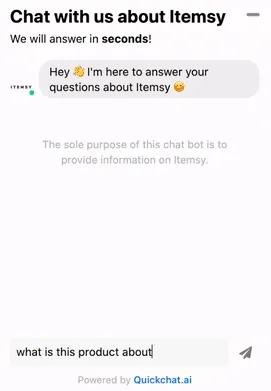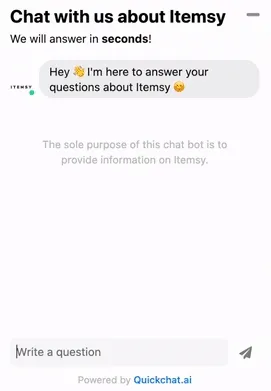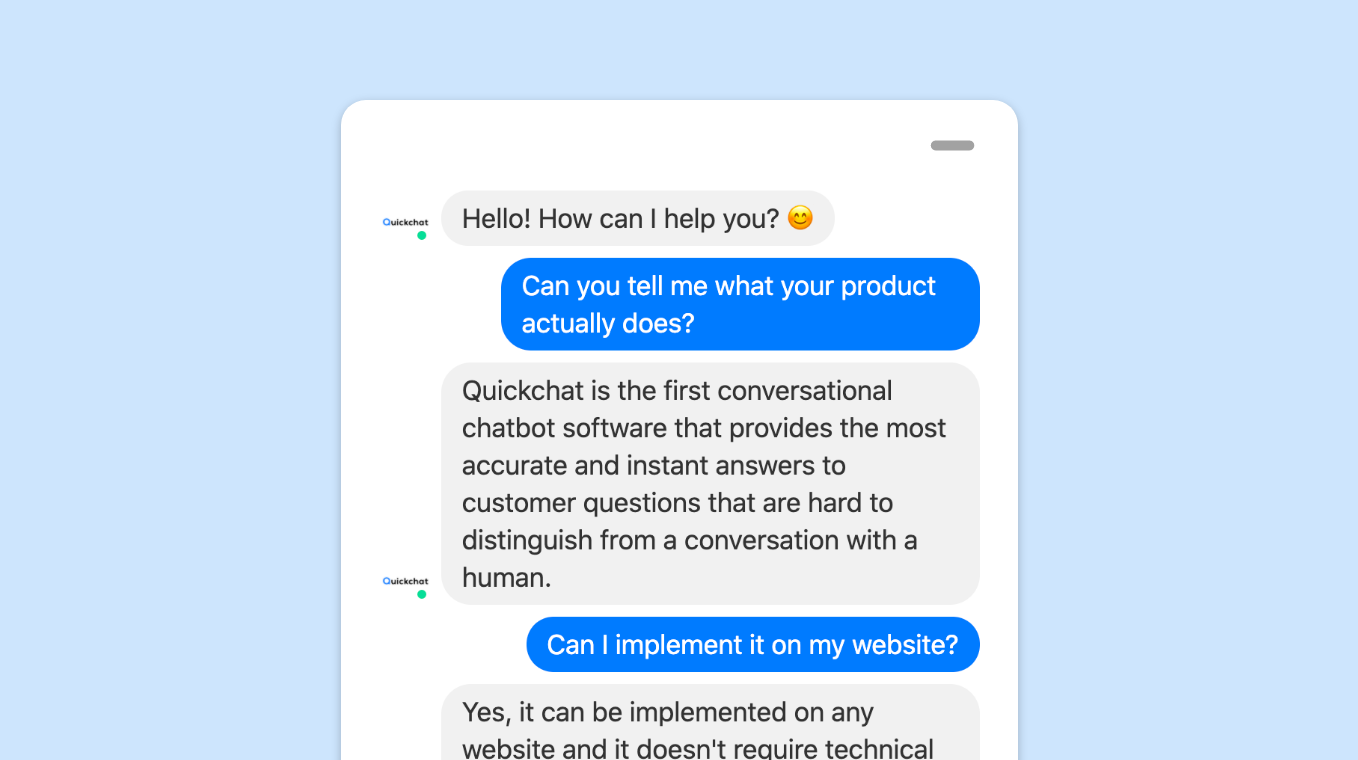The most natural way for us to communicate is, well, natural language. Chat bots are nothing new, but unless they meet a high-enough quality bar, they tend to be a step backward rather than forward. We believe huge language models such as OpenAI’s GPT-3 will form a foundation for a truly conversational human-computer interface. It is, however, a foundation rather than a solution in and of itself.
In this new paradigm, the big challenge becomes ensuring the chat bot strictly sticks to the topic it was designed for and provides accurate information—without depriving it of its creativity.
Knowledge-Base Chat Bots
I will discuss this briefly in the context of what we refer to as knowledge-base chat bots. They are built to answer general questions and hold a conversation about a product, service, or a topic delineated by a predetermined unstructured knowledge base.
 Start a conversation
Start a conversation
Our chat bot implementation, approved by the OpenAI team (try it out live at quickchat.ai), is an expert on Itemsy—a software product for managing the content you read online. It relies on GPT-3 for its conversational capabilities.
Thanks to our Quickchat engine (on top of GPT-3), it makes full and accurate use of the Itemsy knowledge base it was provided with, focuses on the topic at hand, and cannot be maneuvered away from it:
 Avoid off-topic conversations
Avoid off-topic conversations
Conversational AI with Context
Ultimately, it’s all about conversation. It requires context, needs to be unscripted, adaptive, and creative. You’re still talking to a machine, but this time language feels more like natural language. 🙃
 Creative conversation guided by the user
Creative conversation guided by the user
Get Started with AI Chat Bots
We’re ready to work with you and launch conversational chat bots for a wide range of use cases. Reach out to us at quickchat.ai!
Introducing @quickchatai - a creative and multi-purpose AI chatbot that talks like a human!
Try it out live and request access 👉 https://t.co/dzxrQwFrgx
Thanks @gdb for access & @OpenAI for approval 🙏 @GruPiotr #GPT3 #OpenAI pic.twitter.com/auNwDZyqrE
— Dominik Posmyk (@dominikposmyk) September 25, 2020

